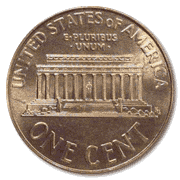Oh my, I fear I may be losing my readers. “He’s actually talking about math!” (general panic ensues). Well, maybe it’s ok. Maybe it’s like looking at a lovely but slightly mysterious painting or poem. There’s the surface beauty, but as you keep looking, the inner meanings being to reveal themselves, layer by layer.
When I was a teenager I became fascinated by infinity, and Georg Cantor became one of my heroes. I loved the way he simply took things we already know and understand about the finite world, and showed how you could apply the same principles to the infinite world.
For example, yesterday I described how he showed that the set of real numbers is bigger than the set of counting numbers, by adopting Euclid’s method of making lists.
But he did much more than that. After all, how much bigger is bigger? Just a little bit bigger? A lot bigger? Cantor came up with a very clear way to describe exactly how much bigger. And it turns out that the set of real number is a lot bigger than the set of counting numbers. A whole lot bigger. A humongously stupendous, outrageously phantasmagorical lot bigger.
And he did it with his usual trick: He stole an idea from an earlier mathematician who was trying to describe finite things, and he used the same idea to describe infinite things. As Pablo Picasso once said: “Good artists borrow; great artists steal.”
Let’s go back to 1654 when Blaise Pascal, who was highly religious, nonetheless agreed to help out his friend Antoine Gombaud, who was into gambling, and who wanted to come up with the best answers to what we would now think of as betting odds. To help him out, Pascal invented the entire science of probability (and his letters to Fermat on this subject incidentally led to the development of Calculus, but that’s a different story).
We can take some ideas from Pascal’s innovations to answer a deceptively simple question. The answer will soon lead us back to Cantor’s solution to how much bigger the set of real numbers is than the set of counting numbers.
But first, let’s go back to Pascal, devout Christian yet patron saint of professional gamblers. If you flip a coin three times in a row, what are the odds that it will come up heads every time? Well, one way to figure it out is to list all of the possible outcomes, and then count up how many are all heads:

| 
| 
|

| 
| 
|

| 
| 
|

| 
| 
|

| 
| 
|

| 
| 
|

| 
| 
|

| 
|  |
The first thing you notice is that there are eight possible outcomes. The second thing you notice is that only one of them is all heads. So the odds are 1 out of 8 of getting all heads.
Now it’s easy to see what the answer is for any sequence of coin tosses: Every time you add another toss, there are twice as many possible outcomes. But still, only one of them will produce all heads. So the odds of getting only heads after one toss is 1 out of 2, after two tosses it goes down to 1 out of 4, after three tosses it’s 1 out of 8, and so forth.
One convenient way to say this is to say that after n coin tosses, the odds of getting all heads is 1 out of 2n (that’s two raised to the nth power).
That’s just a small glimpse into the science of probability, beloved by mathematicians and bookies ever since. Pascal’s brilliant insight was his realization that you could predict how likely it was that something would happen, even if it hadn’t happened yet. We take that for granted now, but before 1654 it hadn’t occurred to anyone that you could reliably predict anything about the future.
That was quite a fundamental shift in human thought, wasn’t it? And these days we think the internet is big news. Compared with something like that, the internet is nothing.
Three hundred years later, Cantor realized that Pascal’s tool for seeing into the future could just as easily be applied to infinite things. But that’s a story for tomorrow.
This reminds me of a funny story. I did some private math lessons for a student, he was into mechanical engineering. After I showed him how to solve a quite complex equation, we needed to get from the abstract to the real stuff and put some numbers in it.
So there was written 2n with n=2. I stared at it and wasn’t able to solve this problem for at least two minutes. 🙂